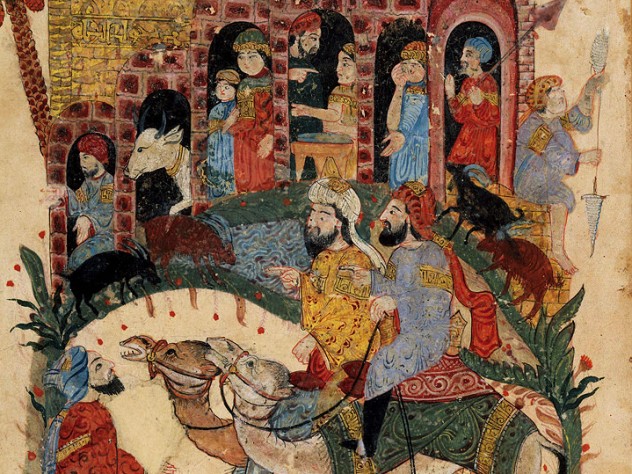Behind the Scenes: Vita
Senior editor Jean Martin reflects on the stimulating and challenging work of the Vita department.
Vita debuted in the January-February 1977 issue of Harvard Magazine, a new department to mark a new, bimonthly, publishing schedule. Devised by then-managing editor Christopher Reed, the two-page, text-plus-portrait feature aimed to introduce historical individuals who should be better known, or to reveal little-known facets of well-known figures. The rules were simple: either subject or author needed a Harvard affiliation, and some image of the subject was required.
As an all-but-dissertation history dropout and the junior-most editorial staffer, handling Vita after that first issue quickly fell to me—and sharing with readers these “brief lives” of human beings spanning millennia, the globe, and the spectrum of human activity has been stimulating ever since. Manuscripts have arrived over the transom, or been solicited, from faculty and staff members, alumni and alumnae, as well as from independent scholars and writers who’ve stumbled across an intriguing character with Harvard or Radcliffe ties.
The truly hard work begins once the subject is chosen. Sometimes that involves art: before email and the internet, we might worry about whether the transparency from Prague would arrive in time; in the era of COVID, we hope collections have staff on site to retrieve existing items in their files. More often the painful challenge is reducing everything authors want to share with readers about their subject to the requisite, coherent, 850 to 900 words without draining all life and color from the text. As editor-disciplinarian, and once author, I have shared their pain—knowing that they want their pieces published, and that the format is not expandable.
Subjects from a time or place likely to be unfamiliar to many readers amplify the challenge. In presenting the classical Arabic writer al-Hariri for the May-June Vita, author Michael Cooperson had to sketch in the literary and social context of his twelfth-century subject, make clear al-Hariri’s achievements in his own day and after (through references from the Anglo-American canon), and interweave accounts of personal incidents that bring the master storyteller and wordsmith momentarily alive.
Christopher Reed knew that this magazine’s readers varied widely in backgrounds and interests; he probably assumed most of them nevertheless shared at least some interest in their fellow human beings. Vita thus offers a way to link present with past, thanks to passionate authors and curious readers, and perhaps to spark unexpected connections among cultures, disciplines, and creative ideas. The department’s long run is a tribute to him and to readers who enjoy and support this piece of the magazine’s commitment to continuing education.
Read “al-Hariri Brief life of a master storyteller: 1054-1122”

